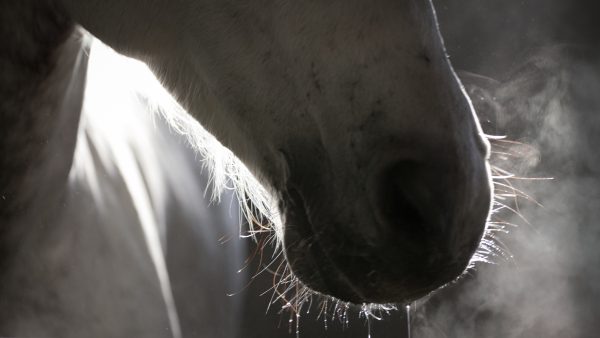
Horse heat stroke: what to do and how to prevent it

Horse heat stroke is a serious and potentially life-threatening condition, especially during the hot summer months. If not promptly recognized and managed, it can lead to severe consequences. This article will explain the causes and symptoms of heat stroke in horses, how to prevent it, and what immediate actions to take while waiting for a veterinarian.
How Thermoregulation Works in Horses
A horse’s normal body temperature ranges from 37°C to 38.5°C (98.6°F to 101.3°F). During exercise, horses rely on several physiological mechanisms to maintain this range:
- Respiration: Increased respiratory rate and depth help cool the body via pulmonary heat exchange.
- Vasodilation: Increased blood flow to the skin allows heat dissipation through the surface.
- Sweating: The primary cooling method—up to 65–70% of excess heat is lost through evaporative sweat.
When these mechanisms fail, heat accumulates faster than it can be dispersed, triggering heat stroke.
Muscular horse breeds are at greater risk due to a higher body mass-to-surface area ratio, limiting effective heat loss. During intense activity, blood is diverted toward working muscles and away from the skin, further reducing cooling efficiency.
Environmental factors also play a significant role. High humidity, poorly ventilated barns, overcrowding, and transportation in hot or poorly ventilated vehicles increase the risk. So does intense work in the sun, poor acclimatization to heat, and lack of proper shade in paddocks.
Recognizing the Signs of Horse Heat Stroke
Early recognition is vital. Common signs include:
- Increased respiratory rate
- Sluggish movement and unresponsiveness
- Staggering or poor coordination
- Drooping head
- Red or congested eye and gum mucosa
- Irregular heartbeat
- High rectal temperature, often over 41.5–42°C (106.7–107.6°F)
You can assess two important indicators:
- Capillary Refill Time (CRT): Press the gum for a few seconds and release. Normal color returns within 1.5–2 seconds. In heat stroke, this may take 2.5 seconds or more.

- Skin Pinch Test: Gently pinch the skin mid-neck. In healthy horses, it returns to normal in under 3 seconds. Delayed response indicates dehydration or early heat stress.

In severe cases, respiratory rate exceeds heart rate, and the horse may collapse into sternal or lateral recumbency, suffer convulsions, fall into a coma, and even die.
What to Do if Your Horse Shows Signs of Heat Stroke
If you suspect heat stroke, act immediately:
- Stop any exercise right away.
- Remove tack to allow airflow.
- Call your veterinarian immediately.
- Move the horse to a cool, shaded, and well-ventilated area.
- Use fans, if available.
- Start cooling with cool (not icy) water, focusing on the neck, legs, chest, and croup. Avoid the kidney area at first.
- Apply cooling boots if available or use ice packs wrapped in cloth, secured with bandages.
- Offer fresh water and consider adding electrolyte supplements.
Preventing Heat Stroke in Horses
To reduce the risk of heat stroke:
- Ensure your horse is kept in a cool, ventilated barn, especially during extreme heat.
- Turn out horses during cooler hours or at night.
- Use shaded paddocks, ideally with trees or artificial shelters.
- Keep box windows open and install fans, if possible.
- Always provide fresh, clean water.
- Supplement the diet with electrolytes during hot weather.
- Avoid riding during the hottest part of the day.
- Give horses frequent showers to help cool their bodies.
- Use well-ventilated transport vehicles, and avoid travel during peak heat or in heavy traffic.
Understanding how your horse regulates its body temperature and knowing the early signs of heat stroke can help you intervene before the situation becomes critical. Prevention is key—adequate hydration, proper ventilation, and avoiding peak heat hours are essential. If symptoms appear, take action quickly and contact your vet.
Taking care of your horse also means protecting them from heat-related risks.
This article was written in collaboration with veterinarian Dr. Matteo Villa.
Meta Title (60 characters max):
How to Cool a Horse After Heat Stroke
Meta Description (140 characters max):
Learn how to prevent, recognize, and treat heat stroke in horses with proper cooling and care during the summer months.
© Rights Reserved.





.png)












